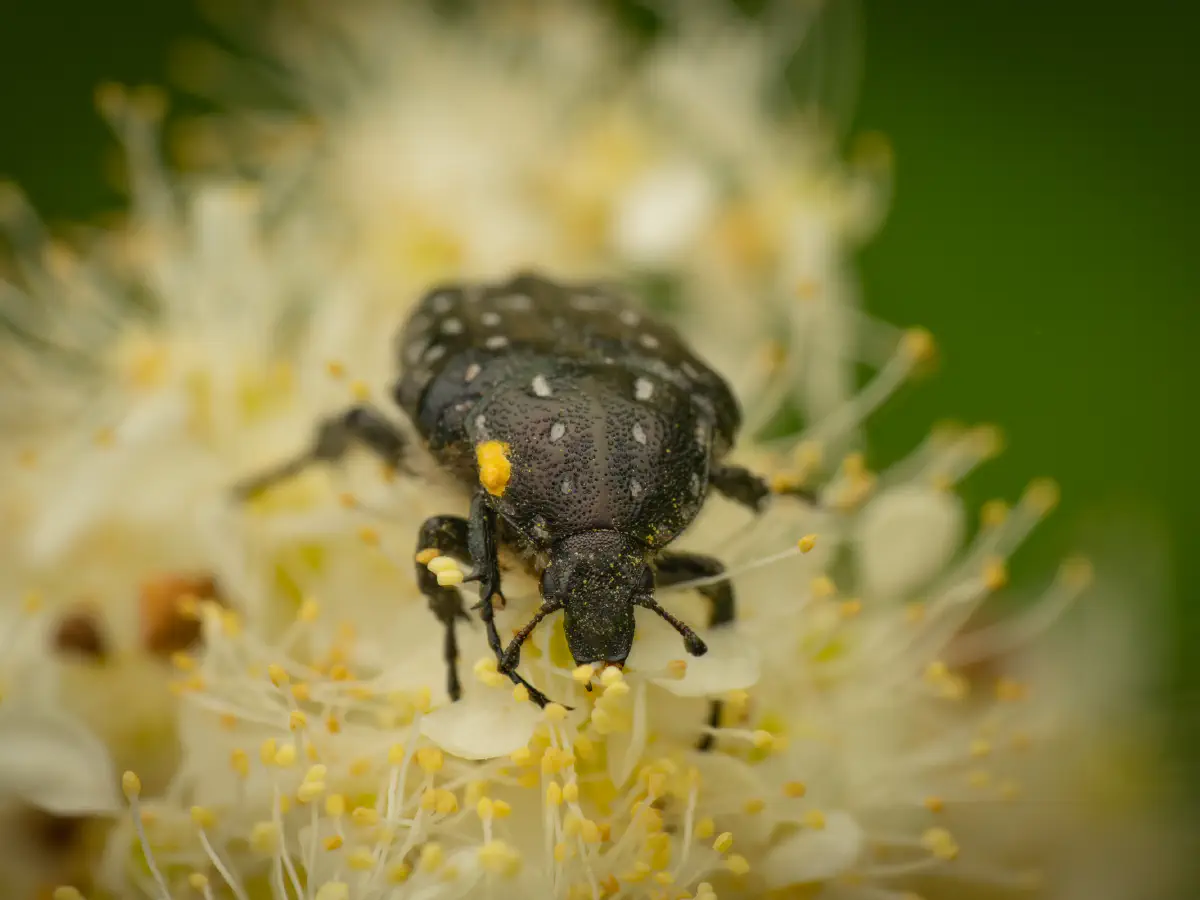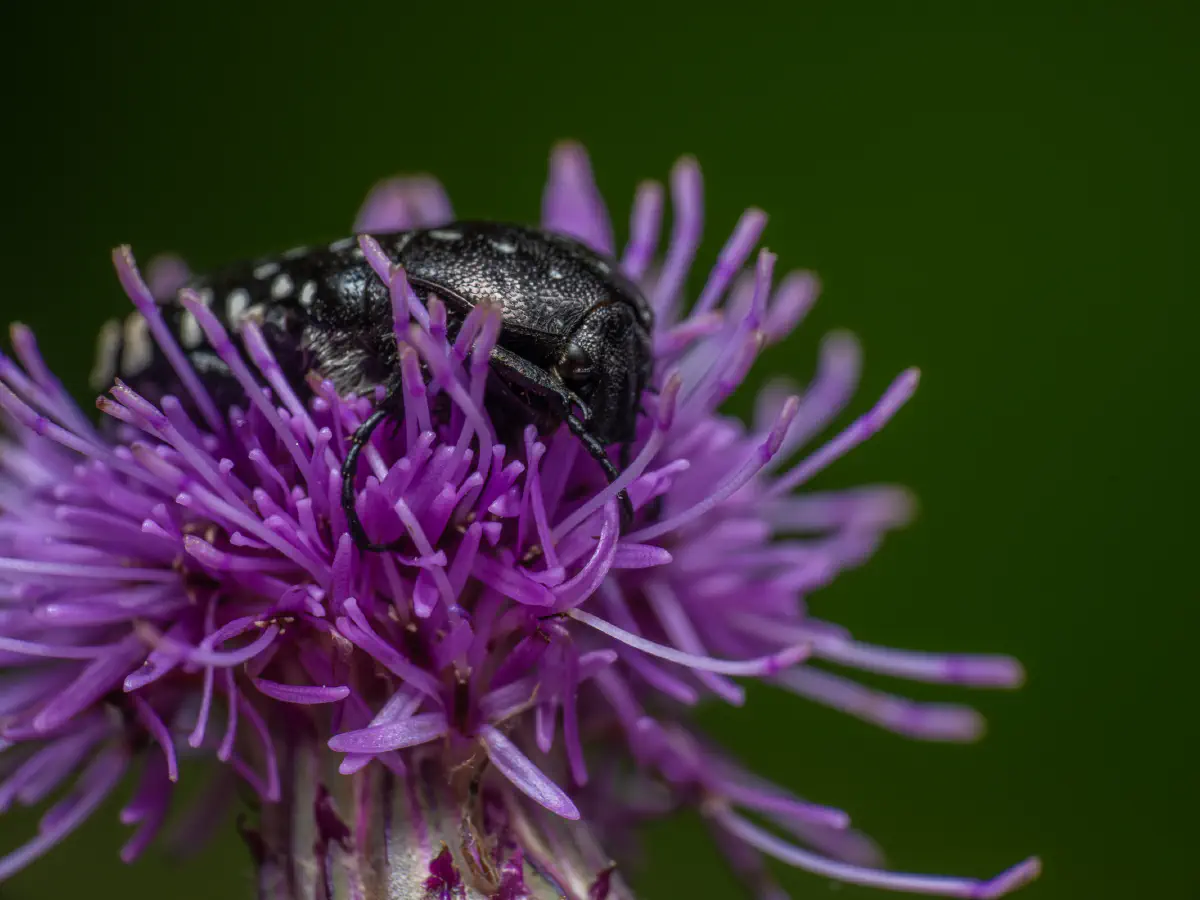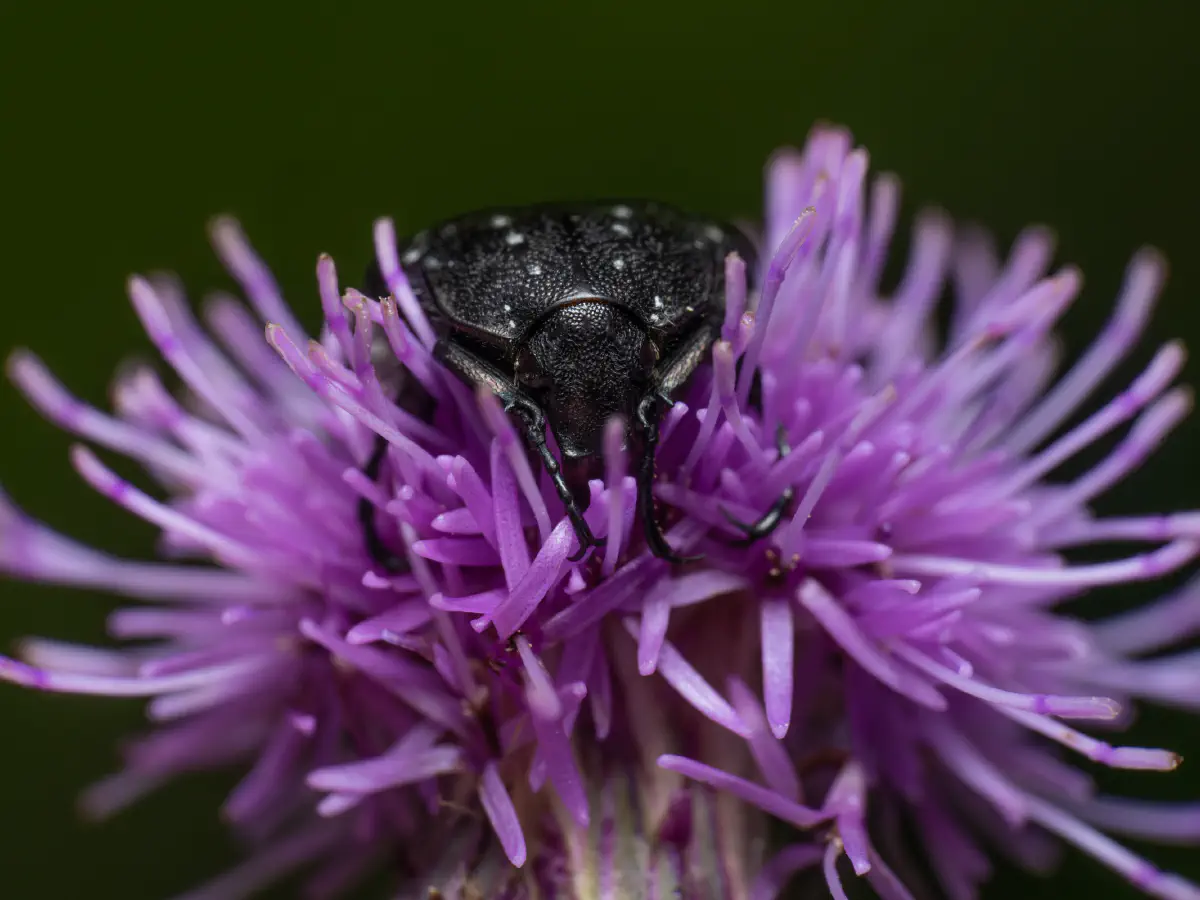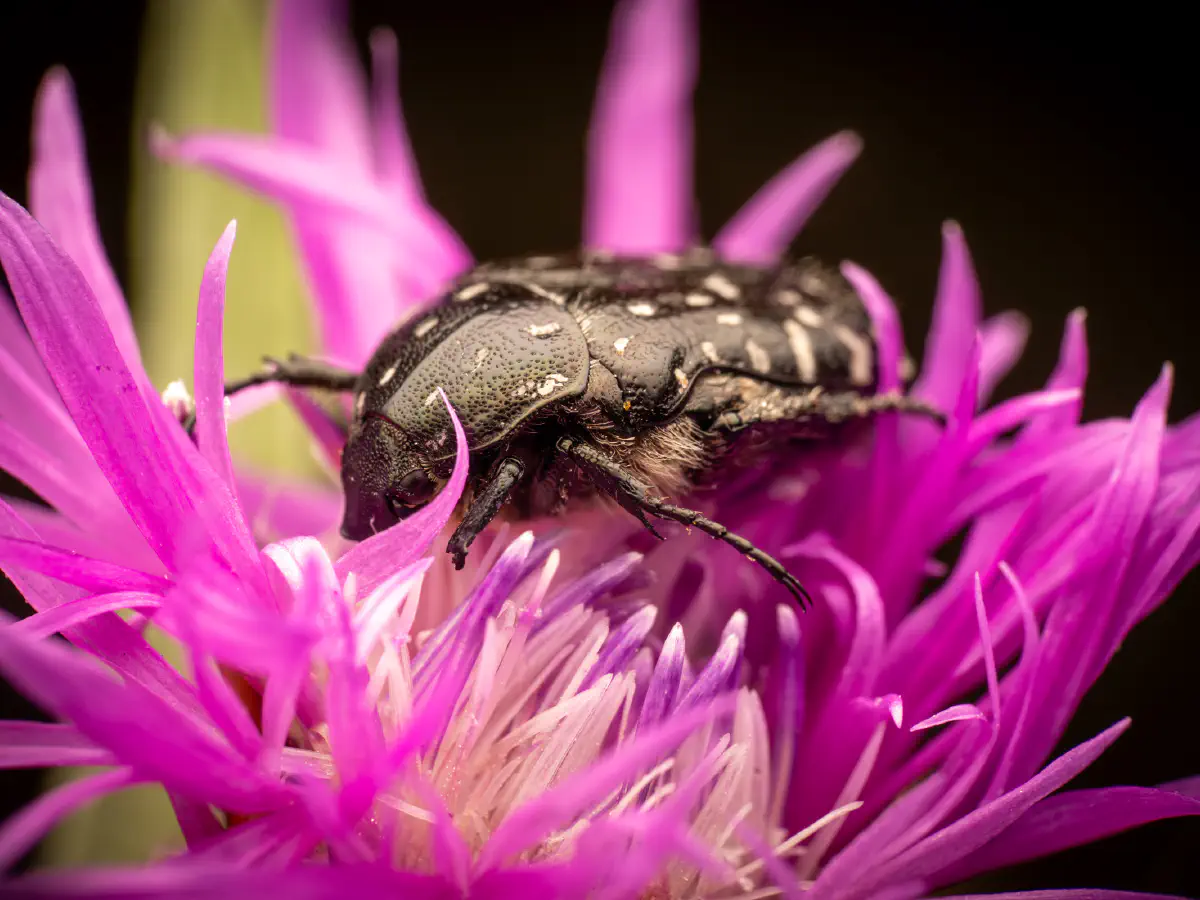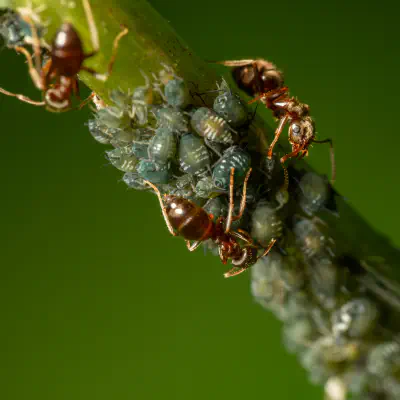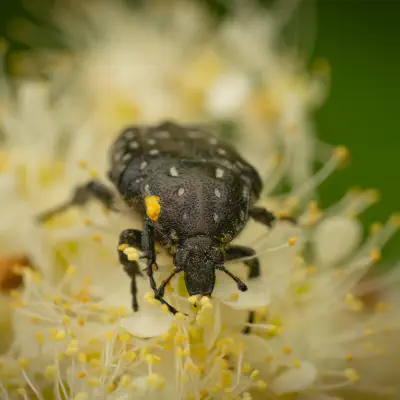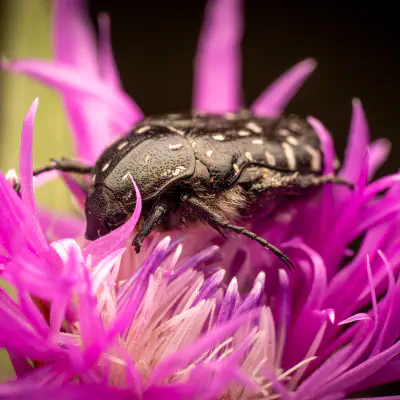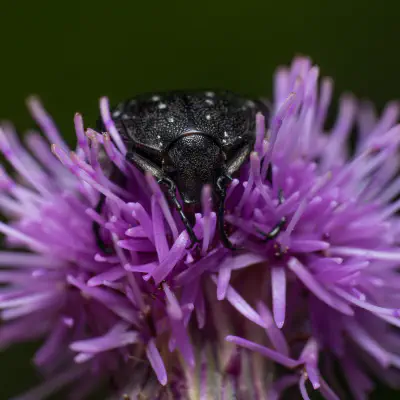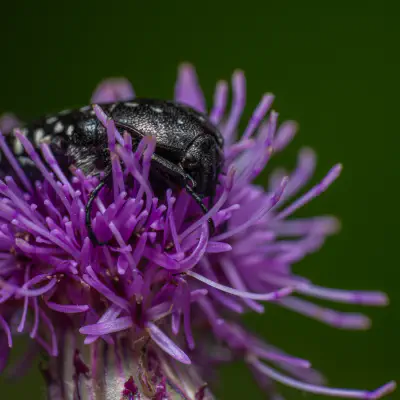The larva lives in the soil and feeds on plant roots, etc. When hatched, it is 4–5 mm long, quite dark blue and with minimal hair, which distinguishes it from other species. It moves very nimbly with sharp movements. The first stage is short (just over 2 weeks) and the larva molts until the next stage. The second instar is larger and more exposed to light. The third instar is the largest and appears in
late summer. Pupation usually occurs in the fall. Body length 16–22 mm. Skull: width 2.11-2.55 mm, height: 1.27-1.56 mm. Skull yellowish to yellowish-brown, smooth and semicircular in shape, dorsally flattened (length of dorsal straight part of skull border slightly less than the one-third of maximum width of skull). The epipharynx has zygum with 12-16 strong conical setae and 5-11 similar setae at their proximal base. Chaetoparia with 45-62 and 31-45 setae on the right and left
sides, respectively. Acanthoparia with 4-8 ovate setae, 1 or 2 dorsal setae elongated. Stridulatory region of jaws with 15-19 transverse ridges, ridges in distal half-width (distance between two ridges between 1/3 and 1/2 of the length of the ridge), ridges on the proximal half narrow. Apical scissor tooth of left mandible falcate and about two to three times larger than subapical tooth. Transverse proximal row of setae and sensilla on Ligula consists of approximately 8
campanulate sensilla and a few stout lanceolate setae. Thoracic legs with stout (spine-like) or long hairy setae, hairy setae always are well-developed. Spiral with 11-14 holes in diameter. Raster monostich, composed of a single horseshoe-shaped row of 23-40 pali, septula broadly ovate, open posteriorly, almost as wide as long. Tegillar setae as long as pali or three times as long, with only a few longer setae. Tegilla fused, rarely setose (mean distance between two setae
about two or three times the length of palus), campus absent. The dorsal parts of the last abdominal segment are sparsely setolized, with a more or less distinct circular field of sparse short setae, often bordered by indistinct long ring-shaped setae.
